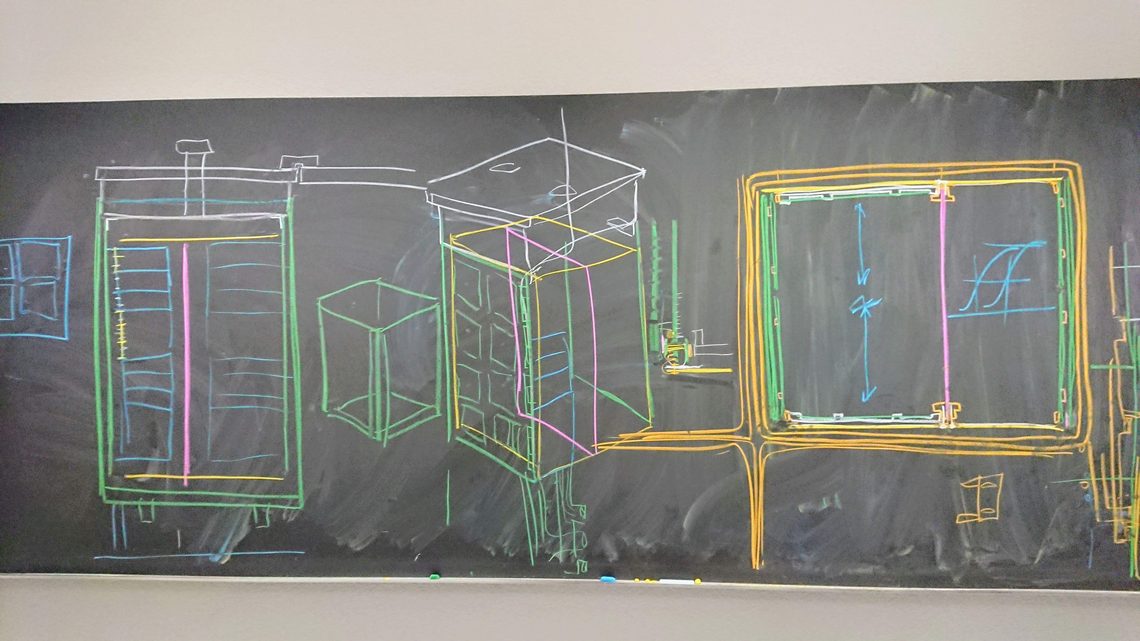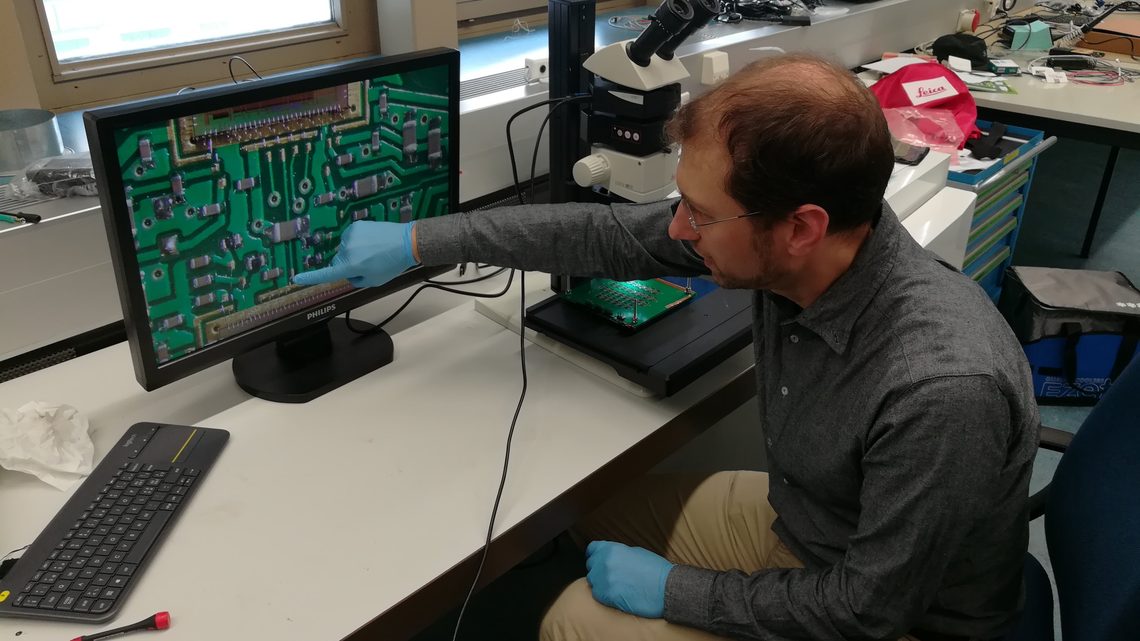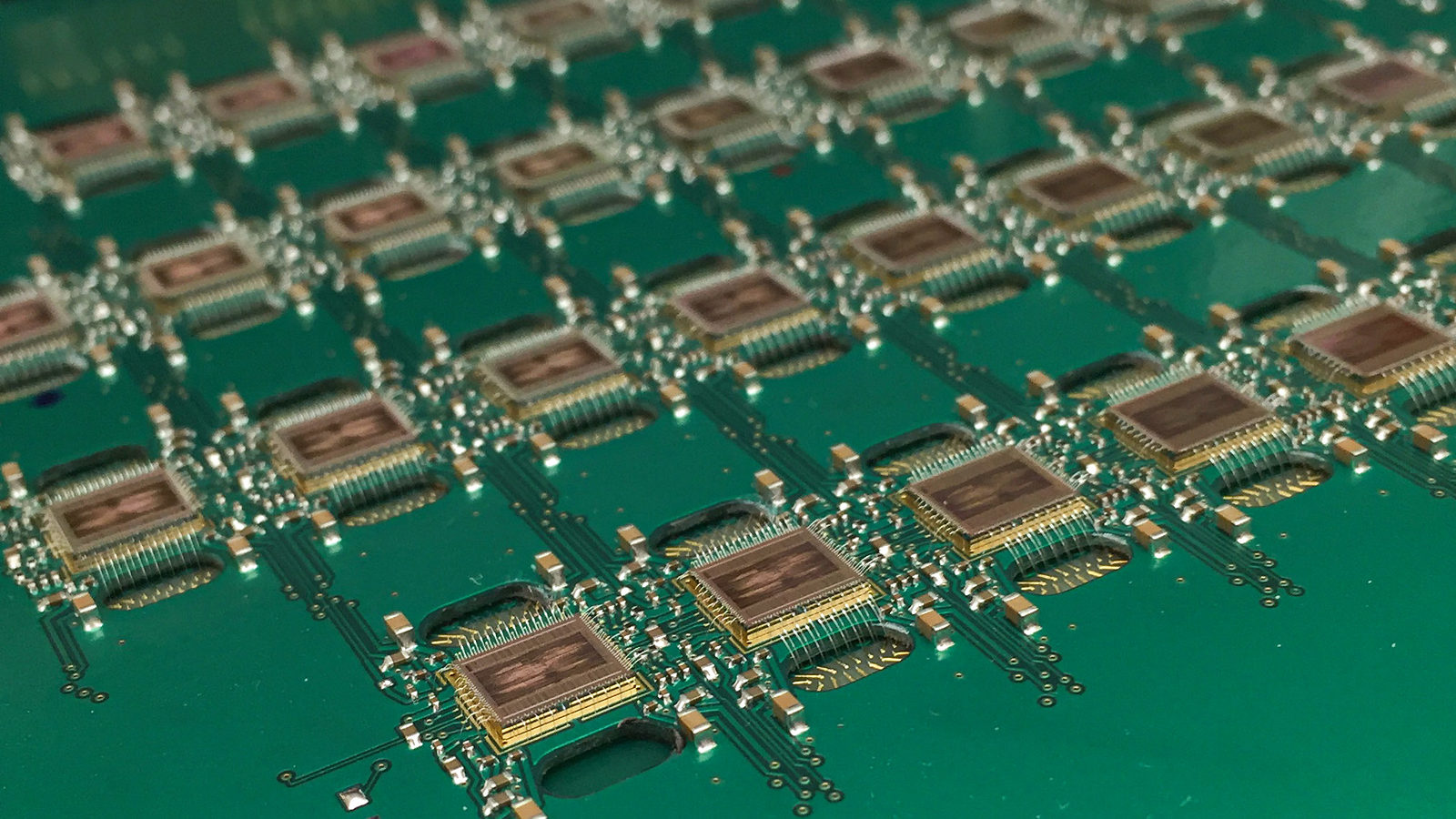It’s 2019. We want our cell phones fast, our computers faster and screens so crisp they rival a morning in the mountains. We’re a digital society, and blurry photos from potato-cameras won’t cut it for the masses. Physicists, it turns out, aren’t any different — and they want that same sharp snap from their neutrino detectors.
Cue ArgonCube: a prototype detector under development that’s taking a still-burgeoning technology to new heights with a plan to capture particle tracks worthy of that 4K TV. The secret at its heart? It’s all about the pixels.
But let’s take two steps back. Argon is an element that makes up about 1 percent of that sweet air you’re breathing. Over the past several decades, the liquid form of argon has grown into the medium of choice for neutrino detectors. Neutrinos are those pesky fundamental particles that rarely interact with anything but could be the key to understanding why there’s so much matter in the universe.
Big detectors full of cold, dense argon provide lots of atomic nuclei for neutrinos to bump into and interact with — especially when accelerator operators are sending beams containing trillions of the little things. When the neutrinos interact, they create showers of other particles and lights that the electronics in the detector capture and transform into images.
Each image is a snapshot that captures an interaction by one of the most mysterious, flighty, elusive particles out there; a particle that caused Wolfgang Pauli, upon proposing it in 1930, to lament that he thought experimenters would never be able to detect it.

Scientists are testing the ArgonCube technology in a prototype constructed at the University of Bern in Switzerland.
Current state-of-the-art liquid-argon neutrino detectors — big players like MicroBooNE, ICARUS and ProtoDUNE — use wires to capture the electrons knocked loose by neutrino interactions. Vast planes of thousands of wires crisscross the detectors, each set collecting coordinates that are combined by algorithms into 3-D reconstructions of a neutrino’s interaction.
These setups are effective, well-understood and a great choice for big projects — and you don’t get much bigger than the international Deep Underground Neutrino Experiment hosted by Fermilab.
DUNE will examine how the three known types of neutrinos change as they travel long distances, further exploring a phenomenon called neutrino oscillations. Scientists will send trillions of neutrinos from Fermilab every second on a 1,300-kilometer journey through the earth — no tunnel needed — to South Dakota. DUNE will use wire chambers in some of the four enormous far detector modules, each one holding more than 17,000 tons of liquid argon.
But scientists also need to measure the beam of neutrinos as it leaves Fermilab, where the DUNE near detector will be close to the neutrino source and see more interactions.
“We expect the beam to be so intense that you will have a dozen neutrino interactions per beam pulse, and these will all overlap within your detector,” says Dan Dwyer, a scientist at Lawrence Berkeley National Laboratory who works on ArgonCube. Trying to disentangle a huge number of events using the 2-D wire imaging is a challenge. “The near detector will be a new range of complexity.”
And new complexity, in this case, means developing a new kind of liquid-argon detector.

This rough diagram of an ArgonCube detector module was drawn by Knut Skarpaas.
Pixel me this
People had thought about making a pixelated detector before, but it never got off the ground.
"This was a dream," says Antonio Ereditato, father of the ArgonCube collaboration and a scientist at the University of Bern in Switzerland. "We developed this original idea in Bern, and it was clear that it could fly only with the proper electronics. Without it, this would have been just wishful thinking. Our colleagues from Berkeley had just what was required."
Pixels are small, and neutrino detectors aren’t. You can fit roughly 100,000 pixels per square meter. Each one is a unique channel that — once it is outfitted with electronics — can provide information about what’s happening in the detector. To be sensitive enough, the tiny electronics need to sit right next to the pixels inside the liquid argon. But that poses a challenge.
“If they used even the power from your standard electronics, your detector would just boil,” Dwyer says. And a liquid-argon detector only works when the argon remains … well, liquid.

Dan Dwyer points out features of the pixelated electronics.
So Dwyer and ASIC engineer Carl Grace at Berkeley Lab proposed a new approach: What if they left each pixel dormant?
“When the signal arrives at the pixel, it wakes up and says, ‘Hey, there’s a signal here,’” Dwyer explains. “Then it records the signal, sends it out and goes back to sleep. We were able to drastically reduce the amount of power.”
At less than 100 microwatts per pixel, this solution seemed like a promising design that wouldn’t turn the detector into a tower of gas. They pulled together a custom prototype circuit and started testing. The new electronics design worked.
The first test was a mere 128 pixels, but things scaled quickly. The team started working on the pixel challenge in December 2016. By January 2018 they had traveled with their chips to Switzerland, installed them in the liquid-argon test detector built by the Bern scientists and collected their first 3-D images of cosmic rays.
“It was shock and joy,” Dwyer says.
For the upcoming installation at Fermilab, collaborators will need even more electronics. The next step is to work with manufacturers in industry to commercially fabricate the chips and readout boards that will sustain around half a million pixels. And Dwyer has received a Department of Energy Early Career Award to continue his research on the pixel electronics, complementing the Swiss SNSF grant for the Bern group.
“We’re trying to do this on a very aggressive schedule — it’s another mad dash,” Dwyer says. “We’ve put together a really great team on ArgonCube and done a great job of showing we can make this technology work for the DUNE near detector. And that’s important for the physics, at the end of the day.”

Samuel Kohn, Gael Flores, and Dan Dwyer work on ArgonCube technology at Lawrence Berkeley National Laboratory.
More innovations ahead
While the pixel-centered electronics of ArgonCube stand out, they aren’t the only technological innovations that scientists are planning to implement for the upcoming near detector of DUNE. There’s research and development on a new kind of light detection system and new technology to shape the electric field that draws the signal to the electronics. And, of course, there are the modules.
Most liquid-argon detectors use a large container filled with the argon and not too much else. The signals drift long distances through the fluid to the long wires strung across one side of the detector. But ArgonCube is going for something much more modular, breaking the detector up into smaller units still contained within the surrounding cryostat. This has certain perks: The signal doesn’t have to travel as far, the argon doesn’t have to be as pure for the signal to reach its destination, and scientists could potentially retrieve and repair individual modules if required.
“It’s a little more complicated than the typical, wire-based detector,” says Min Jeong Kim, who leads the team at Fermilab working on the cryogenics and will be involved with the mechanical integration of the ArgonCube prototype test stand. “We have to figure out how these modules will interface with the cryogenic system.”
That means figuring out everything from filling the detector with liquid argon and maintaining the right pressure during operation to properly filtering impurities from the argon and circulating the fluid around (and through) the modules to maintain an even temperature distribution.

Researchers assemble components in the test detector at the University of Bern.
The ArgonCube prototype under assembly at the University of Bern will run until the end of the year before being shipped to Fermilab and installed 100 meters underground, making it the first large prototype for DUNE sent to Fermilab and tested with neutrinos. After working out its kinks, researchers can finalize the design and build the full ArgonCube detector.
Additional instrumentation and components such as a gas-argon chamber and a beam spectrometer will round out the near detector.
It’s an exciting time for the 100-some physicists from 23 institutions working on ArgonCube — and for the more than 1,000 neutrino physicists from over 30 countries working on DUNE. What started as wishful thinking has become a reality — and no one knows how far the pixel technology might go.
Ereditato even dreams of replacing the design of one of the four massive DUNE far detector modules with a pixelated version. But one thing at a time, he says.
“Right now we’re concentrating on building the best possible near detector for DUNE,” Ereditato says. “It’s been a long path, with many people involved, but the liquid-argon technology is still young. ArgonCube technology is the proof that the technique has the potential to perform even better in the future.”
Editor's note: This article is adapted from an article published by Fermilab.







